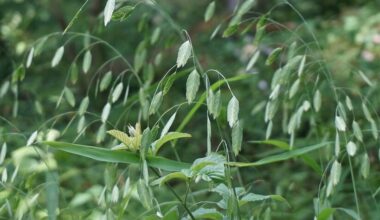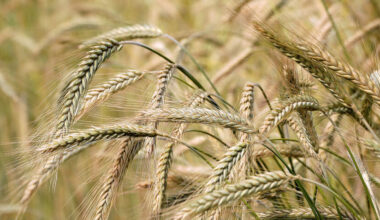The cranberry is a shrub native to North America in bog environments. It therefore requires very specific growing conditions in the garden with acid and humid soil, but it can withstand very cold temperatures.
Contents
What do we do with the fruits of the cranberry?
Cranberries are rich in vitamin C. They can be eaten raw, cooked or dried. However, cranberries are considered too acidic by most palates, and are most often used in preparations: pies, stewed dishes, jams, and even delicious infusions.
Planting the cranberry
Where to plant the cranberry?
The imperative is an acid soil with a pH of 4 to 5 and very humid. A half-shade exposure will maintain a cooler atmosphere.
Cranberries can also be grown in pots with the same conditions of substrate and exposure.
In which soil should the cranberry be planted ?
The cranberry is grown in fresh, very acidic soil (pH: 5 to 5.5), rich in organic matter and well drained.
How to expose the cranberry ?
In the sun, sheltered from the wind because the leaves are sensitive to drying.
Note: the cranberry is particularly fond of high altitude soils. The colder the climate, the better it does, although the flowers cannot withstand frosts that are too late.
When to plant the cranberry?
Preferably in the fall because the cranberry resists very well to the cold.
How to plant the cranberry?
Cranberry plants are sold in containers.
- Dig a pit 30 inches wide by at least 23 inches deep, insulating the sides of the hole with geotextile.
- Fill with a mixture of blond and brown peat with 20% sand.
- Allow 28 inches between each foot.
Cultivation and maintenance of the cranberry
Water abundantly, even in winter, and preferably with non-calcareous water. Every spring, add sulfur to keep the pH low. Surface with peat and sand in the fall. On the other hand, this bog shrub needs absolutely no fertilizer.
Apply the same rules for growing in pots, with even more vigilance in winter for watering, as the cranberry is persistent.
Pruning the cranberry
The cranberry is slow to grow and pruning only serves to contain too much development, so it is very occasional. If necessary, prune in the spring.
Diseases, pests and parasites
The cranberry borer is an insect that is rampant in North American growing areas, but not in France.
Soil worms, such as otiorhynchus larvae, can damage the roots. Preferably use parasites such as nematodes.
Harvesting the cranberry
Cranberry requires strict growing conditions. It grows in a peaty soil, with a very acid ph, ideally between 4 and 5, rather poor (the acidity of the soil can be reinforced by adding sulfur). A too rich soil will favor the development of the foliage to the detriment of the berries.
The soil must always remain cool to humid, because the large fruit cranberry must never suffer from drought. In America, intensive crops are harvested by flooding the fields in October, in order to float all the berries.
When and how to harvest the cranberry?
Harvesting is done in the fall, when the red berries are fully ripe. A single plant can provide 300 g of fruit. It is necessary to wait at least four years before obtaining a first harvest.
Preservation of the cranberry
The fruits can be dried or transformed into juice and jam. They can also be frozen.
Multiplication of the cranberry
The cranberry stems are easily rooted by natural layering. But it can also be voluntarily multiplied by layering, cutting the stems or dividing the clumps.
- Lay down the soft stems by burying them under a few inches of soil.
- Cut the cranberry during the growing season either as a herbaceous cutting or as a semi-woody cutting.
- Practice clump division in October, on well established plants that have already suckered into the soil, to recover their side shoots.









